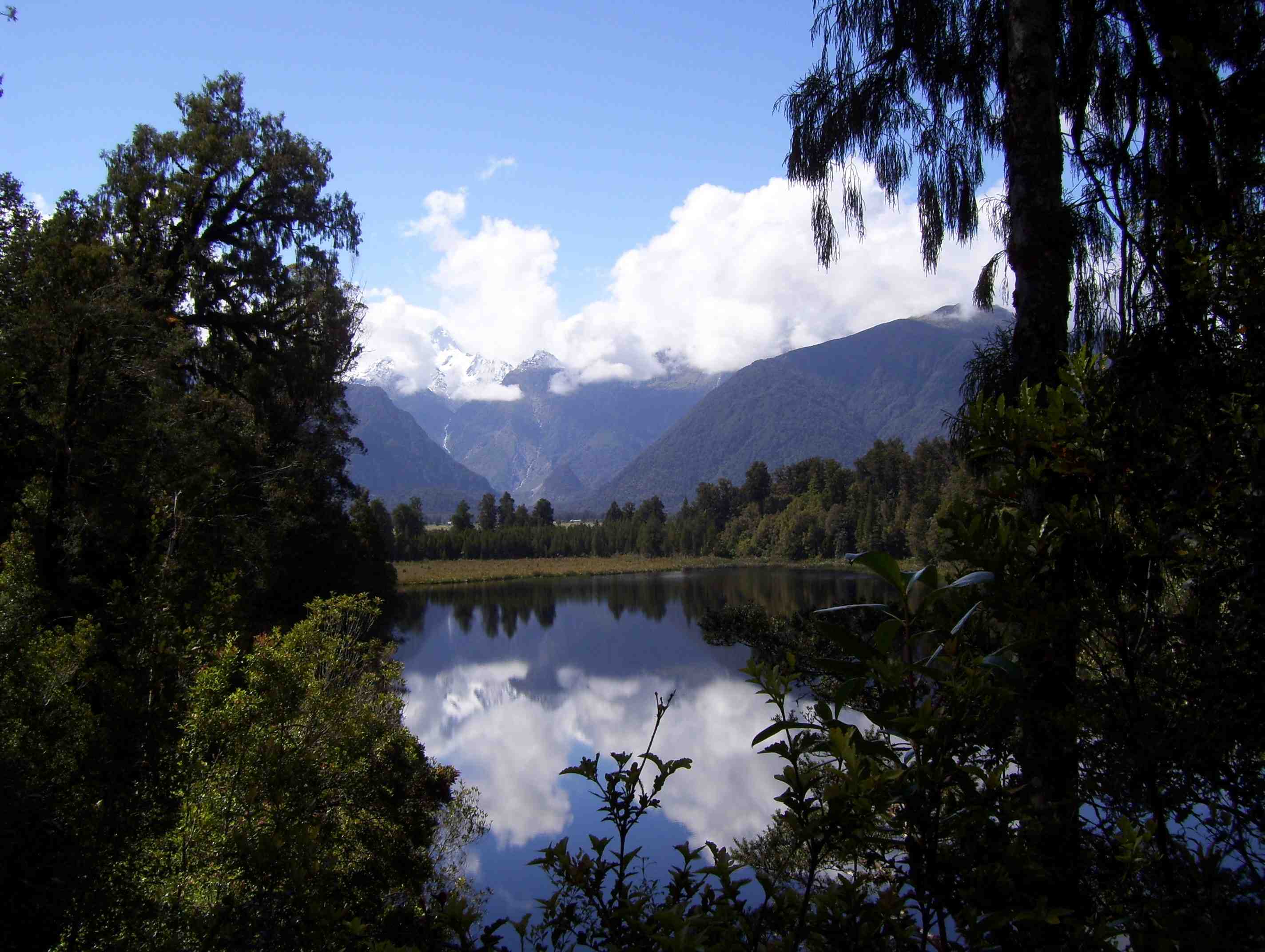| South
Island, Eastside click pictures for full size view |
South Island, Westside |
 saw Mount Cook in the
setting sun (left). That was something!
saw Mount Cook in the
setting sun (left). That was something! | Fox Glacier, and note people on the trail. | Franz
Joseph Glacier, where we had more rain the day we visited than the 3 inches that fell in 2007 in Los Angeles |
| Ariel
View Mount Cook, looking south; note plains off to
east (upper left). Red line is road to Tasman Glacier Lake (home of the black icebergs). This is same view as picture of Mount Cook above. |
Mount
Cook looking east from Tasman Sea; Fox and Franz Joseph Glaciers come down these valleys. Note: these photos are of a model in the Park Visitor Center!!! How we wish they were really real! |
 During our visit to NZ we met countless
young people from around the world working in the restaurants and
hotels. When you asked “how long have you worked here?” the
answer was inevitability "about one month." NZ is a
hikers/adventurers mecca, and it seems that young people come to
take advantage of all that NZ has to offer. It is very easy to
get a one year visitor/work visa, so, as more than one person told
us, "I work a few weeks to save up some money, and then move on and
do a trek or backpacking for a few weeks, and then take another job
again." The people we encountered were exceptionally
friendly. It was just amazing how genuine people expressed
their willingness and desire to be of service. And it wasn't
just a single individual, it was, almost without exception, everyone
we encountered. This even extended to the train crews.
We used a train for the last leg of our tavels from Tongarrio
National Park to Auckland. When our train pulled into the
station, Jason asked the conductor, almost as a joke, if he could
ride with the engineer up front. He responded that he'd see
what he could do. And, sure enough, Jason was escorted to the
front of the train for a ride in the cab for about 20 minutes!
During our visit to NZ we met countless
young people from around the world working in the restaurants and
hotels. When you asked “how long have you worked here?” the
answer was inevitability "about one month." NZ is a
hikers/adventurers mecca, and it seems that young people come to
take advantage of all that NZ has to offer. It is very easy to
get a one year visitor/work visa, so, as more than one person told
us, "I work a few weeks to save up some money, and then move on and
do a trek or backpacking for a few weeks, and then take another job
again." The people we encountered were exceptionally
friendly. It was just amazing how genuine people expressed
their willingness and desire to be of service. And it wasn't
just a single individual, it was, almost without exception, everyone
we encountered. This even extended to the train crews.
We used a train for the last leg of our tavels from Tongarrio
National Park to Auckland. When our train pulled into the
station, Jason asked the conductor, almost as a joke, if he could
ride with the engineer up front. He responded that he'd see
what he could do. And, sure enough, Jason was escorted to the
front of the train for a ride in the cab for about 20 minutes!
Mills Brothers - Glow Worm
Shine little glow-worm, glimmer, glimmer.
Shine little glow-worm, glimmer, glimmer.
Lead us lest too far we wander.
Love's sweet voice is calling yonder.
Shine little glow-worm, glimmer, glimmer.
Hey, there don't get dimmer, dimmer.
Light the path below, above.
And lead us on to love!